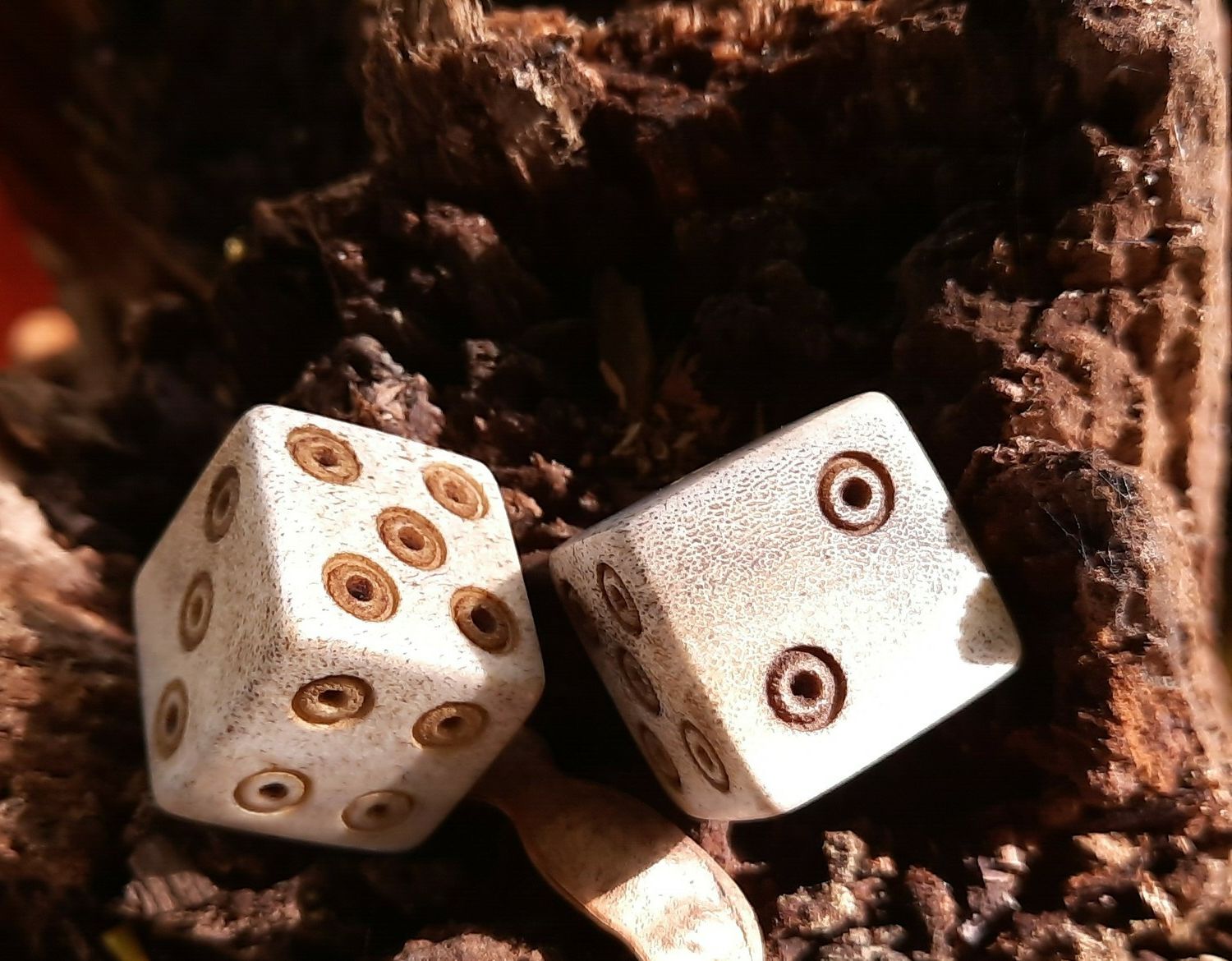Ancient Roman Hand-Carved Bone Gaming Dice (Moose antler, 2 pcs)
Ancient Roman Bone Gambling Dice (1st-3rd Century AD Recreation) - Hand Carved Moose Antlers - 2 pcs
Step back in time with this set of hand-carved Ancient Roman bone gambling dice, meticulously crafted from moose antlers. These dice are a faithful recreation of Roman-era gaming tools, measuring approximately 20 mm (0.8 inches) each. This set of two dice is perfect for collectors, history enthusiasts, or those looking to add an authentic touch to their gaming experience.
Key Features:
- Material: Hand-carved from moose antlers (no animals harmed, as antlers naturally shed).
- Size: Each die measures approximately 20 mm (0.8 inches).
- Craftsmanship: Expertly carved by hand, ensuring unique, detailed designs. Slight variations may occur.
- Creation Time: 1-3 days from the date of purchase.
- Historical Significance: Dice were popular in Ancient Rome for entertainment, gambling, and even settling disputes. Known games like "Tali" were played with animal bones (astragaloi), much like modern-day dice games.
Cultural Context: Roman dice were often used in taverns, gambling houses, and on the streets. Though gambling was banned in public spaces, it thrived in private venues, with iconic figures like Emperor Commodus promoting dice games. Roman dice were not only used for games but also featured in the Biblical practice of casting lots, a term frequently mentioned in texts like Leviticus and Psalms.
Gaming Tradition: The most popular dice game was "Tali," similar to Yahtzee. Dice combinations like Venus (1, 3, 4, 6) and Senio (6 with any other number) were highly sought after. Roman dice typically followed the principle that opposite faces added up to seven, just like modern dice.
Additional Information:
- These dice are inspired by historical accuracy and will make a great conversation piece or addition to your collection.
- Ships in a set of two, ensuring they come in the same size for your gaming or display needs.
- Material Source: Moose antlers naturally shed in spring (March-April), so no harm comes to animals.
Perfect For:
- History enthusiasts
- Ancient Rome or Roman Empire collectors
- Unique gaming accessories
- Gifts for dice game lovers and historical artifacts collectors
Care Instructions: To preserve the carvings, avoid exposure to excessive moisture and harsh chemicals. Wipe clean with a soft cloth as needed.
Order Now and bring home a piece of ancient Roman gaming history!
Hashtags: RomanGamblingDice, AncientRomanGaming, HandCarvedDice, BoneDice, HistoricCollectibles, RomanEmpireHistory, MooseAntlerCrafts, DiceCollection, TaliGame, VintageGaming, AntiqueDice, RomanRecreation, GamblingHistory

